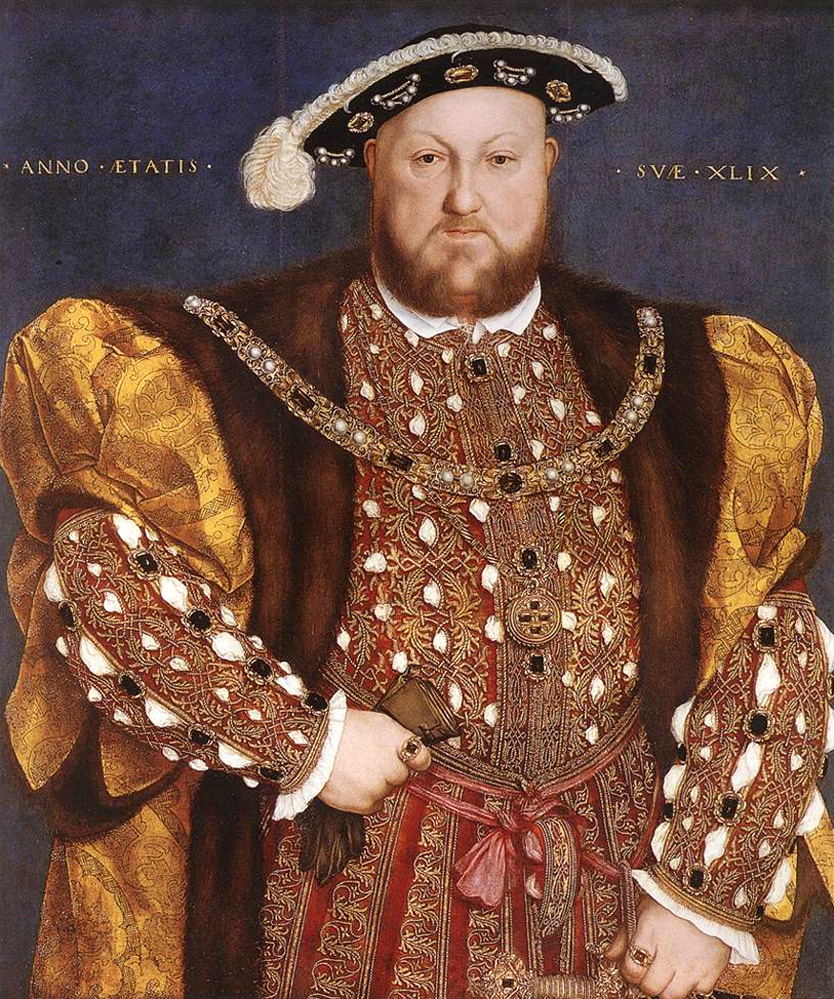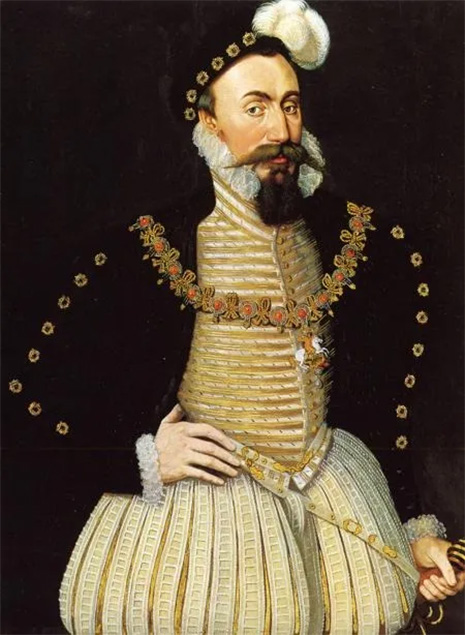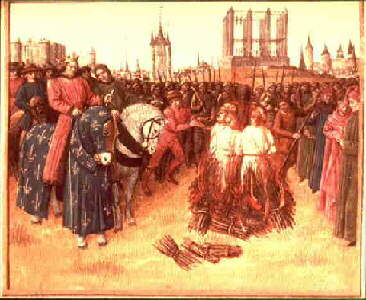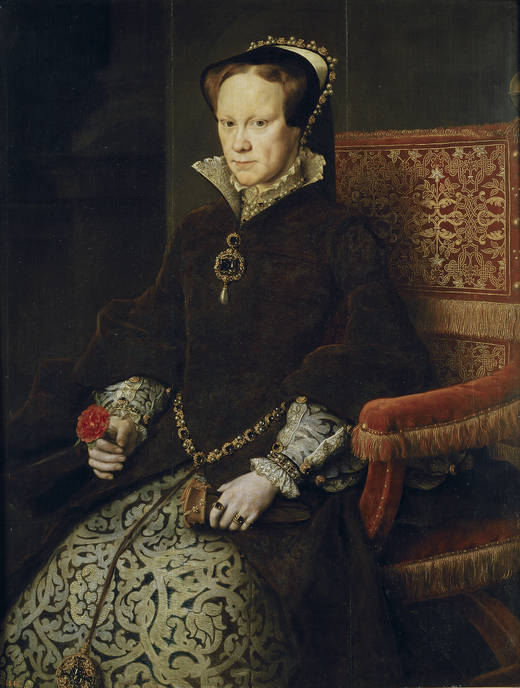459 years ago today, the reign of Lady Jane Grey ended after only 9 days. Taking her place was the only surviving child of Henry VIII and his first wife Catherine of Aragon, Mary I of England. This marked the beginning of the 5 year reign of England's most hated queen as Mary attempted to revive Catholicism in England. Her religious fervor resulted in the death of many - political dissidents were beheaded, pregnant women burnt at the stake - the horror at her crimes reaches us today.
Her path to becoming the monster she later became can be traced to her father, Henry VIII. Henry desperately wanted a male successor and Catherine failed to give him a male heir, he renounced his faith to the Roman Catholic Church and begun the Protestant Church with himself as the leader. When Mary was 17,
Thomas Cranmer, the Archbishop of Canterbury, nullified the marriage between Catherine of Aragon and Henry VIII reducing Mary to bastard status. In the same move, he proclaimed the marriage between Henry & this made Elizabeth, a daughter of Henry VIII and Anne Boelyn, legitimate. Enraged by this decision by a protestant, Mary and Catherine dove headlong into traditional Catholicism setting the stage for the later religious persecution.
 |
| Henry VIII |
 |
| Catherine of Aragon |
 |
| Anne Boleyn |
 |
| Thomas Cranmer, Archbishop of Canterbury |
At the age of 34, Henry VIII died and his only son (with his 4th wife) Edward, was crowned king Edward VI of England and Ireland at the age of 9. (the line of succession at this time was: 1st Edward, 2nd Mary, 3rd Elizabeth) Being raised in the faith, Edward was far more Protestant than his father was. This led to begin whitewashing all Catholic vestiges left in England further angering Mary, a devout Catholic. Despite numerous efforts from Edward, Mary simply would not convert as she saw Edward and his government as heretics. This established her later extreme hatred towards heretics.
 |
| Edward VI |
When Edward VI became sick, he became distraught that a Catholic would take the throne and erase all his work promoting the English Protestant Church. To counteract this, he appointed Lady Jane Grey, his Protestant cousin, as his successor. However, the popularity of King Henry VIII had not diminished in the five years after his death. Using this popularity, Mary intentionally ignored religion and instead, propagandized her status as Henry's daughter and garnered great support from Protestants and Catholics alike. Nine days later, Mary had captured London and was crowned Queen Mary I of England.
 |
| Lady Jean Grey |
This set the stage for the revival of Catholicism and to strengthen her ties with the Catholic Church, she wedded Philip of of Spain (King of Naples, King of Spain and Sicily, King of Portugal and the Algraves) in the same year. The thought of a foreign Catholic king (served as king
jure uxoris) forced the Protestant aristocracy into rebellion in the months following her wedding and was brutally suppressed. All of the rebels were executed including Lady Jane Grey and her father Henry Grey, the Duke of Suffolk. After the executions, Mary began her campaign to purge all Protestant elements from England. To better punish these 'heretics', Mary re-introduced the archaic punishment of burning at the stake for heresy. The cruelty of this punishment was to deter all Protestants and coerce conversion back to Catholicism.
 |
| Philip of Spain |
 |
| Henry Grey, Duke of Suffolk, 3rd Marquess of Dorset |
Hundreds of people were burnt at the stake. The clergy were the first victims and then their families were all burnt in public squares witnessed by thousands. One of the most infamous cases was in the Channel Islands, where a pregnant woman gave birth while being burnt at the stake and the baby was thrown back into the flames. This atrocity, amongst many others done in the name of Catholicism, sparked unpopularity throughout England regardless of religious affiliation.


Her own failed marriage in inability to conceive a child had further angered her and her methods became even more sadistic than before. The most infamous of the examples was the burning of the stake of archbishop Thomas Cranmer. Using physical and psychological torture, Cranmer was compelled to recant his faith in Protestantism 6 separate times. This allowed Mary to publicly humiliate the man she blamed for her mother's failed message and the downfall of Catholicism in England. The 7th time was scheduled to done on a public forum prior to his execution with a pre-scripted speech. However, Cranmer deviated from the speech and condemned Catholicism and proclaimed that the pope was the antichrist and as a result, died as a hero.
Overall, over 300 people were burnt at the stake during the 3.5 years when Mary dedicated to purging Protestantism, killing more people than the more famous Spanish Inquisition in the same period of time. Ironically, the Protestant martyrs strengthened the revolve of the Protestant population. When Mary died in 5 years after becoming Queen, Protestantism immediately became the dominant religion in England. Elizabeth I of England, upon succeeding the English throne, ushered in a new golden age for England as the English Protestantism became the second largest Christian institution in the world only to Roman Catholicism. Yet, despite all the success of Elizabeth and English Protestantism, the reign Mary I of England remains inbedded into history as a reign of religious persecution that will forever live in history.










沒有留言:
張貼留言